|
Everyone is in the thick of workshops. Here are some photos below about Acrobatics in the Commedia dell'Arte sessions (masks and melodrama) + choosing silence in the live theatre/performance art session + friends posing during a break.
0 Comments
We are thrilled to welcome you all in Ramallah. Despite the problematic political situation we have managed to prove that art is larger than borders and checkpoints… - from the opening remarks of Emile Saba, one of the young organizers of Ashtar Theatre's International Youth Festival *** A lovely celebration to start it off - an evening of singing and dancing - dimmed by reduced numbers because some groups did not receive permission from Israel to enter and one young participant, a UK resident who happened to be born in an Arab country, was kept at the airport for 10 hours, questioned, and finally told she did not pass security clearance. She is being sent back later today. But in the evening, over platters of humus and mini pizzas, Noor sang beautiful folks songs while Uday, who is half-Indian, accompanied her on tabla, a young guy whose band was meant to play, came solo and sang Stairway to Heaven, Massad sang Sway, a girl from the Norwegian group sang a trembling trill of a song, and then all the kids - from Bethlehem, Jerusalem, Ramallah - all ran up to the mic and sang the Palestinian national anthem. Writing from the first workshop by Emile. Emile
Why do I want to write? In the deep darkness of my mind, I breathe… clutching for an exit, for a lost child I’ve tried to bury it, I tried very hard But there it’s back, stronger than ever fierce as a wild horse black as its hair blind by light driven by ink It could be a taste of freedom a taste of death a willing death so painful that you would beg for more And as I fight through it I bleed blood and salt And I breathe out knowing that it has never disappeared *** I can count the times I’ve seen my sea Their sea… My sea… blue and white waving in silence no seagulls only sparrows gray and a lot of concrete dusty vehicles dusty pine trees and smiles Time goes fast when we sit to eat we do not pray before lunch never did and never will Rounded fried sweets I’d like to call them “Submarines” painted with a golden crust my grandmother’s best There is always a sense of waiting waiting for more money less shouting more sleep less hand gestures more of nothing Two houses one with a garden and one with a balcony My mother wanted the balcony and then she missed the garden. Gray, green and candle tales tea and wine and later dinners Laughs Bullets Giggles Bullets Concrete… Silence *** My name is Emile. I write it in its French version with an “e” at the end. It comes from Greek “Amylous.” A “Great Fighter” it means, and I am not. At least in that sense. A black and white photograph hung on a blank wall. That’s all what I have of the man who I was named after, my grandfather. I wonder if he ever asked himself about the meaning of his name. But, if he did, I bet that they told him: “It’s a Saint's name.” Names: they possess, label us, shape us and we grow to fit into their letters, their vowels. The “Os” the “As” the ح and the “eees” I can taste red apples in my “M” and smell black cats in my silent “e.” A foreign name in an Arabic country! What a cruelty! The tiredness of having to correct them. It’s not “Ameer” or “Ameen” or even “Email!” You know what! Never mind, Call me whatever you like You may even fancy a “Mustafa” for me it will suit me, I dare, as long as you never meet the fighter in my name! Writing by Lamis from the first workshop. Lamis
Why do I want to write? Because I’ve written before, and I know I am good at it. I know I should start writing again to get that rustiness off of me, my mind, and my imagination. I am at a phase in my life where I do everything just to prove to myself that I am still me, I am still here and that I refuse to give up for whatever reason. I refuse to be bound by physical or mental checkpoints. I am not the checkpoint. I am not my judgmental society. I am not the stereotypical picture which people have of me. **** I live in that…. neighborhood near that city, and that other city busy, noisy burning all the time animals dying at 2:00 am in the morning sitting in a corner by itself I wish I can take it to that… big green village near that now black greenish city where we sit alone fresh air, quietness, calmness Animals living every day, all day keeping our company Maybe it should also shed its skin and put a new skin on a more authentic one a closer one *** I grew up hating my name. For my younger self it sounded silly, noisy, old, not to mention that it meant nothing to young me, or to young anybody. And then one day my auntie told me what it meant, and OH MY GOD… the horror. I hated it even more. “A flexible lady” Flexible how?? Physically? Mentally? Emotionally? And why am I flexible, and why am I a lady?? I wanted to be called “Yafa” or something. But then she told me who called me “Lamis,” and why and how he chose that name. The fact that he chose it meant the world to me. I love it because he loves it, because it means so much to him, and because it made him present in front of young me, it makes him present now, present every time. Writing by Iman from the first workshop. Iman
Seven thousand years of known history and seven billion people on earth - that’s a fact. How many more facts I need to know the simple answers of my being? Digging into, digging onward, digging at; not to stop digging is a fact. *** I am from a land that gets very dry in the summer and scarcely wet in the winter from an olive branch that taught me to pick and prick from a neighborhood that smells donkey shit and fed me childhood I am the daughter of a strong female lineage that sowed love and resistance breast-fed milky-way dairy and backed faces of martyrs to feed my people I am the happiness of a child finding a shekel on the ground and a rage of an old man not able to cross the road to his village because the road was hijacked by a settler I am the carrier of a Canaanite bone and beauty and the daughter of the goddess of sacred marriage I am the autumn leaf that keeps dying and resurrects in all your religions *** Mary is a name that I always fancied. It was the name of my childhood friend, a name that I wanted to have, but how can I have a Mary name when my mother is called Marie, the French equivalent of the English Mary. The same name in Arabic is Mariam, a name that people think comes from the Virgin Mary, but it is the name of the northern part of Palestine during the Canaanite era. A name that grabs the strength of red soil, green land and the music of the waves of the Mediterranean Sea: Miriam, Mary, Marie. Marie had another name - when she was young, she was called Alice. Every time, my great grandmother gave birth to a daughter she would call her Marie, and the child would die. She lost three Maries and insisted on calling my mother by the same name, a sadomasochist act that I never understood. Alice/Mary carried the burden of her dead aunts and kept a promise to her grandmother to fight death despite the many visits he attempted at her. Mary though was never married. she is still the neighbor of the virgin Mary. Writing by Rana from the first workshop Rana
What helps me write is depression, that feeling of being not able to answer the questions that you ask yourself. Why the world is like that? Why am I like that? Why am I here? And where am I going? MY personal questions I started thinking about what I wrote…I stopped writing. I can't say more. Who do I write for? Am I writing for myself or for the listeners? Do I write to impress or to reach the feeling of comfort? *** I am from the trees I am from the sound of water and wind I am from my parents and sister I am from the corner where I smoke my cigarette so my parents won't smell the smoke while they're sleeping I am from the stage the wooded floor of the stage, the curtains the audience and the play I am every character that I played I am every friend that passed by me or stayed until now I am from a land that you smell its history I am from the sea of that land, the mountains and the olive trees and above all, I am from the wind I want to be THE wind. I'm not until now but I will be SOMETIME *** My mom always says she named me after her best friend, but apparently this is not my own story. She named my sister after her other best friend also. I always felt jealous of my sister's name, Hiba, which means a gift. Above her being a gift for my parents and I am not, Kathem Al-Saher made a song for her. Oh, the nights I spent crying after I heard that song. My mom started collecting songs that have my name. She found only two. That didn’t satisfy me. Then the crisis of what my name means began. My mom says it means music. Well, that is not true. Rana is the past tense of the verb, Yarnow which means "looking." What? My name only means looking? That is not romantic. It doesn't mean anything spiritual. It's only looking. But, don’t worry, whenever somebody asks me what my name means, I say "looking at the future." Yesterday was our first writing workshop. We were five - Emile, Iman, Lamis, Rana and me - sitting around two tables joined together in the multi-purpose room that adjoins the theater, with the curtains drawn just a breadth because the late afternoon light was so strong. I sat facing that narrow sliver of sun, listening to remarkable writers whose words and truths are so close to the surface, they came straight and fast onto the page.
Excerpts above from: Rana Lamis Iman Emile Driving from East Jerusalem to Ramallah with Iman and her husband. At the first check point near Alteera, there are lanes like you see at toll booth and signs in red: “This road leads to Zone A, entrance to Israeli citizens are forbidden.” About Zones: http://www.settlerwatch.com/en/publikationer/vastbankens-abc/
Ramallah and the West Bank are in Zone A, meant to administered by the Palestinian civil authority. Which means, Iman’s husband says wryly, that no one does anything and it’s chaos. No problem going through into the West Bank. The issue is coming out, when you return to Israeli territory, that’s when the check part of the checkpoint gets fully implemented. WEST BANK: FIRST IMPRESSIONS New construction and dismantled construction. All White, or cream colored. Arabic signs for stores like clothing, printers, a grocery store. We pass the entrances to two refugee camps. They have a big white gate and blue UN signs. The refugees are from Palestinian villages that were within territory that Israel took over. Or more speicifally according to the United Nations Relief and Works Agency http://www.unrwa.org/palestine-refugees Palestine refugees are defined as “persons whose normal place of residence was Palestine during the period 1 June 1946 to 15 May 1948, and who lost both home and means of livelihood as a result of the 1948 conflict.” Why don’t they integrate into Palestine? Why do they keep their refugee status, I ask. Because, Iman says, by maintaining their status as refugees, they maintain their inalienable right to return to their villages… …that no longer exist, I say. Yes, she says, that no longer exist. There are over 55 Refugee camps in Palestine. Two small dark haired boys in white pants stand in the doorway of a white courtyard with crumbling cement blocks. WHY RAMALLAH?
Q: Why did you choose Ramallah for Ashtar theater? Iman: Because till 1997, you couldn't put one stone on top of another in Jerusalem; no building permits were issued. Then when the PLA came to Ramallah, in 1993, after the Oslo Accords, there was an expansion of the city. At that time, there no checkpoints. Ramallah was only 20 minutes door to door from Jerusalem. After the Second Intifada, everything changed. But at that time when we bought the space for the theater, we didn't know there would be a separation between Old Jerusalem and the West Bank. Nor did we know about checkpoints. ARRIVING AT ASHTAR An main room with offices attached, and down a hallway, the theater with a lobby and a multipurpose room with paintings by a graduate from Ashtar’s Drama Training Program which is an an extra curricular after school program. Some of the young graduates are now planning the second annual International Youth Theater festival which starts on June 20. 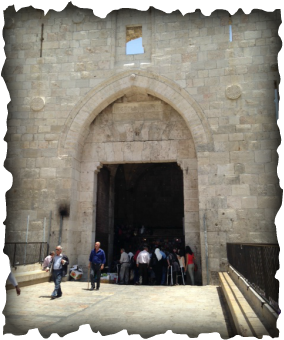 Entering the Old City through the Damascus Gate, one of 8 gates. Built in the 16th century by Suleiman, the Sultan of the Ottoman Empire The Old City - as the name indicates - was what Jerusalem used to be till the late 1800s, a walled city. Didn't take any pictures of the bazaar because I was so busy looking and walking and watching where I walked - because it's full of people, and more people and shops with heaps of spices, I mean mini-mountains of them, and tourists in shorts, and women wearing scarves, and women without scarves, and lanterns, and stores with artifacts, and incense, and sweet shops, and clothes shops, and perfume shops, and souvenir shops, with old VISIT PALESTINE posters, and fresh orange juice shops. The majority of the residents of the old city are Palestinian. We asked the way to the Holy Sepulchre; a young man carrying a broom and yellow bucket made a sound in Arbaic that seemed - to me - impossibly short to contain an answer but turns out he did answer. He said: "turn right, left, right." Also he said "follow me." So we followed him, and when we got to the courtyard of the church, we went right and he went left. Shukron, we said, but also we said, yeslamo both of which mean thank you. 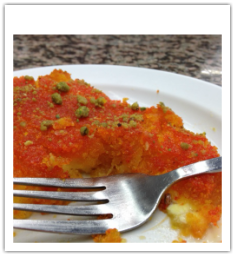 Knafeh… along the way. We stopped for this famous Palestinian desert. The base is a local sweet cheese which has a mozzarella like texture and a whole lotta sugar, sprinkled with pistachios. 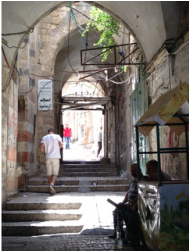 One alley leading to another… 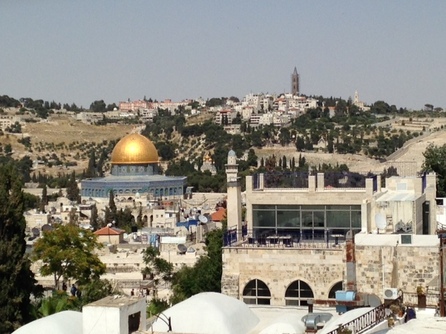 The Temple Mount The Holiest of Holies where the Divine Sprit rests... The Dome of the Rock where Muhammed ascended to heaven… …so it is said. On the way from the Tel Aviv airport into East Jerusalem, there are pine trees that look like Ponderosa and green hills, and Israeli settlements on one side of the road (condos or housing developments that look identical) and Palestinian villages on the other side (houses spaced apart, that are not identical) and roads with restricted access, and a wall stretching all the way along the highway, topped with barbed wire in sections, and sudden open stretches of beautiful open land, low hills and valleys and white rocks, limestone like, terrace like.
It's beautiful, I say to Iman who is driving. It is, she said, but it also hurts to see it. This was all West Bank land. open land. our land. The story of this land, their story, our story, THE story, where does your story begin, and where does mine end? At the Madrid airport, a young woman with relatives in the West Bank was putting up a fuss when the El Al officials wanted to search her checked bag. A young man explained patiently that it was procedure and I though that was that. Then he called over female agents who led the girl away to be strip searched. She was the only one of the rest of us who had that done. At the same airport, in the same waiting room, an older woman on her way to visit friends in Tel Aviv, shrugged and said, I don't mind the waiting and luggage checking and the questions one bit, it makes me feel safe. Outside the Tel Aviv airport, Iman and her son winced to see a woman wearing a short sun dress with a black and white pattern. That's our national symbol, said Iman, made into fashion. It's called a Hatah/Koofiyeh, her son adds. He says there's been a campaign, systematic or haphazard, but it seems organized somehow to distort it, undercut it. Why? Because the first freedom fighters would wear it - it's a common Arabic head garment. But that made them easily identifiable so in solidarity, everyone in Palestine began wearing them and it became a symbol of our struggle. How can you tell a Palestinian building from an Israeli building from far away? The Palestinian buildings have black water towers on top because "sometimes we have water cuts and so we have to collect water and keep it." |
LandBlogland as metaphor, catalyst, inspiration Archives
April 2015
CategoriesArchives
April 2015
|
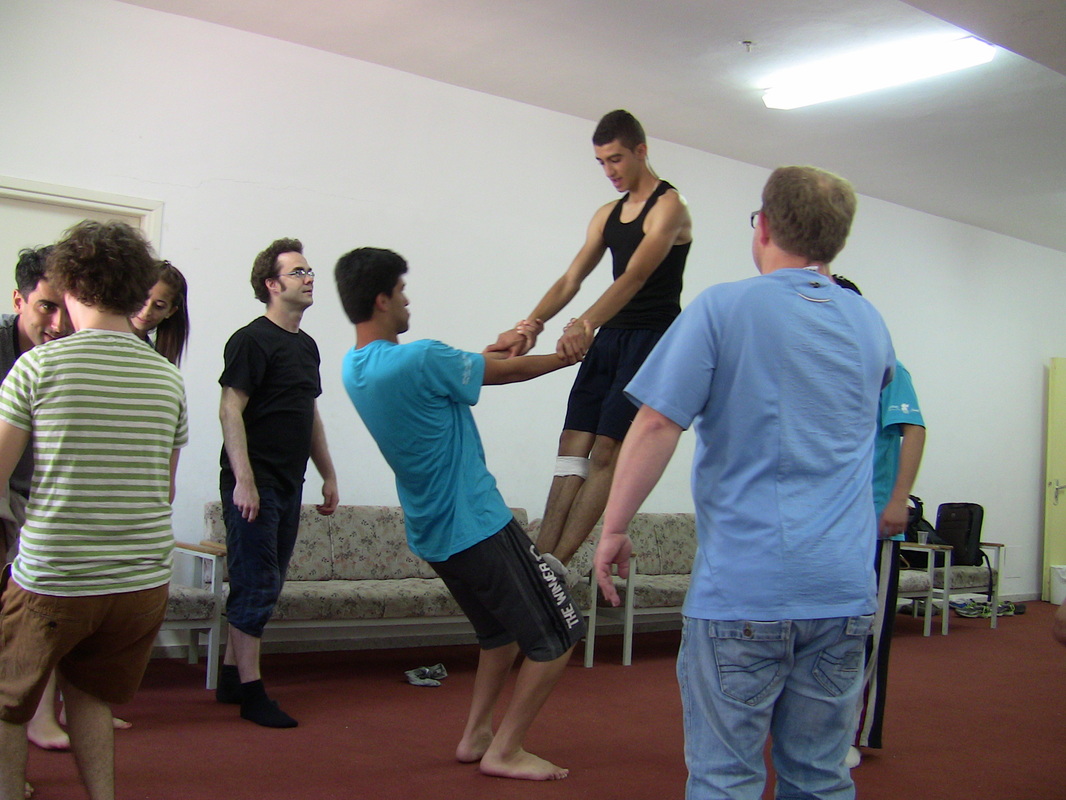
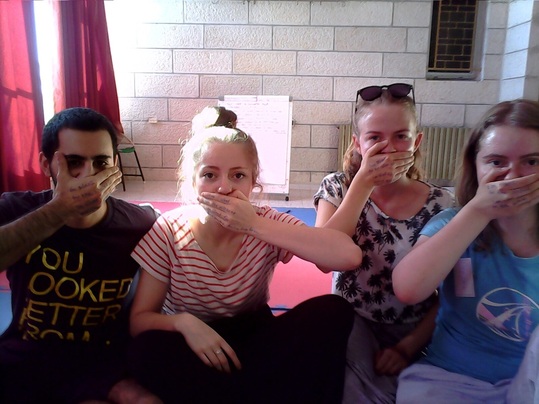

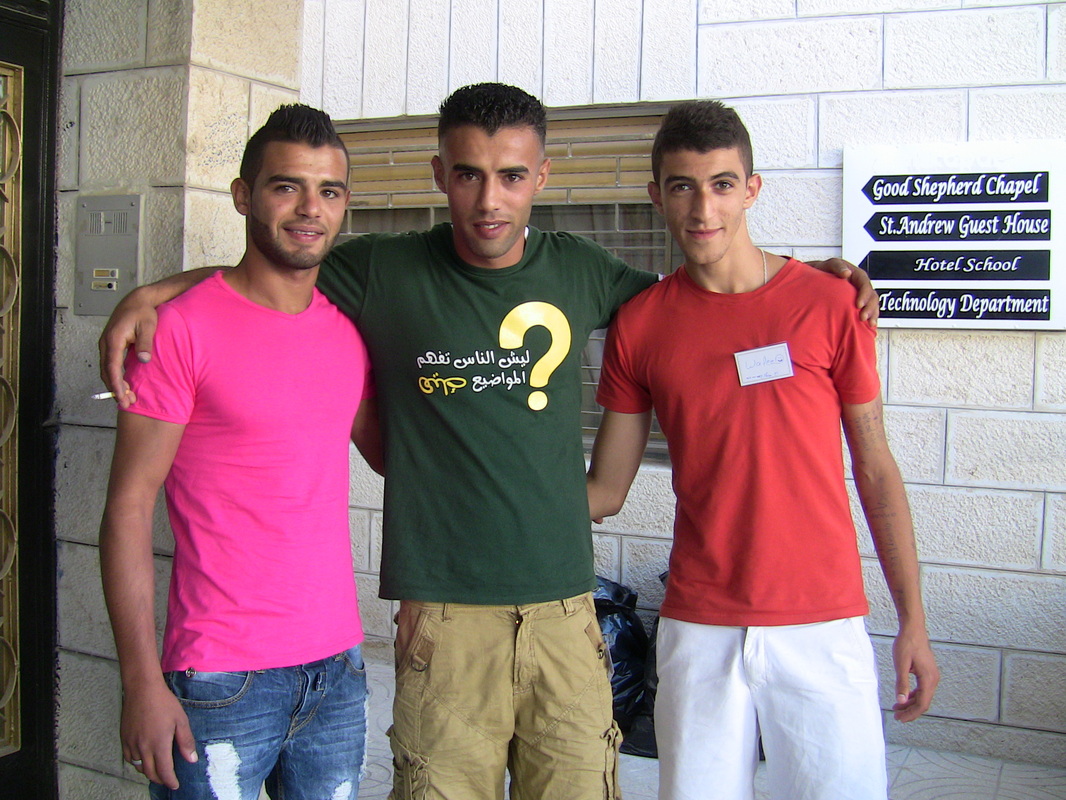
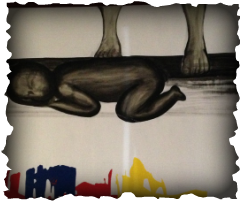
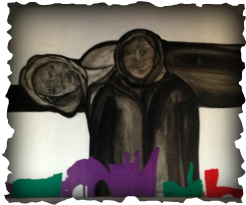
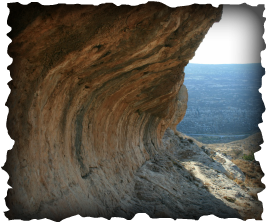
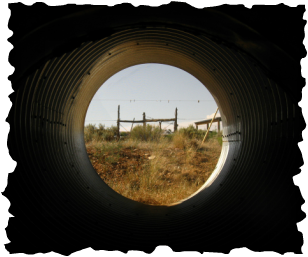
 RSS Feed
RSS Feed